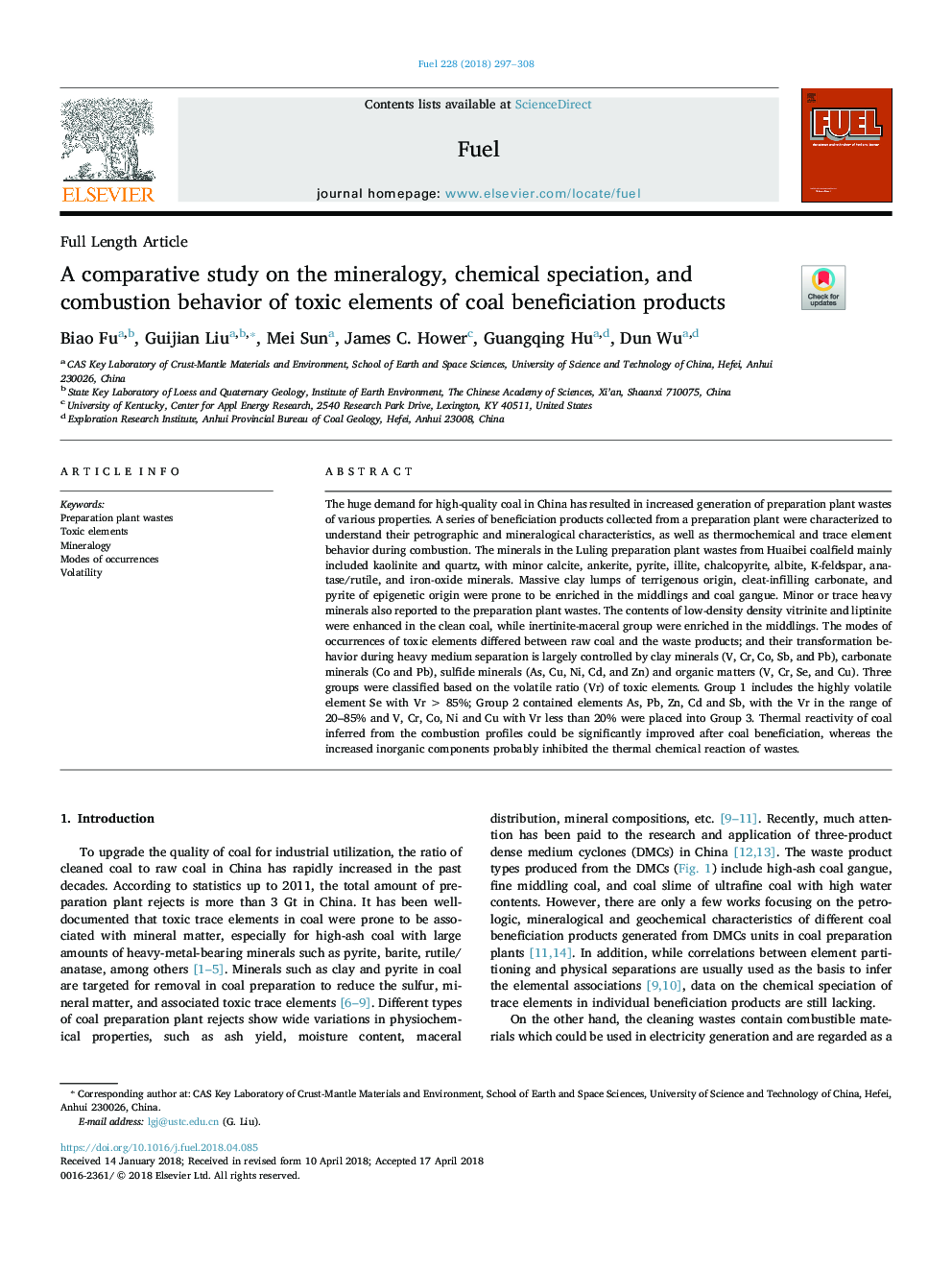| کد مقاله | کد نشریه | سال انتشار | مقاله انگلیسی | نسخه تمام متن |
|---|---|---|---|---|
| 6630751 | 1424936 | 2018 | 12 صفحه PDF | دانلود رایگان |
عنوان انگلیسی مقاله ISI
A comparative study on the mineralogy, chemical speciation, and combustion behavior of toxic elements of coal beneficiation products
ترجمه فارسی عنوان
یک مطالعه تطبیقی در مورد کانی شناسی، شیمیایی و رفتار احتراق عناصر سمی محصولات معدنی زغال سنگ
دانلود مقاله + سفارش ترجمه
دانلود مقاله ISI انگلیسی
رایگان برای ایرانیان
کلمات کلیدی
ضایعات گیاه آماده سازی عناصر سمی، کانی شناسی، حالت های رخداد، نوسان،
موضوعات مرتبط
مهندسی و علوم پایه
مهندسی شیمی
مهندسی شیمی (عمومی)
چکیده انگلیسی
The huge demand for high-quality coal in China has resulted in increased generation of preparation plant wastes of various properties. A series of beneficiation products collected from a preparation plant were characterized to understand their petrographic and mineralogical characteristics, as well as thermochemical and trace element behavior during combustion. The minerals in the Luling preparation plant wastes from Huaibei coalfield mainly included kaolinite and quartz, with minor calcite, ankerite, pyrite, illite, chalcopyrite, albite, K-feldspar, anatase/rutile, and iron-oxide minerals. Massive clay lumps of terrigenous origin, cleat-infilling carbonate, and pyrite of epigenetic origin were prone to be enriched in the middlings and coal gangue. Minor or trace heavy minerals also reported to the preparation plant wastes. The contents of low-density density vitrinite and liptinite were enhanced in the clean coal, while inertinite-maceral group were enriched in the middlings. The modes of occurrences of toxic elements differed between raw coal and the waste products; and their transformation behavior during heavy medium separation is largely controlled by clay minerals (V, Cr, Co, Sb, and Pb), carbonate minerals (Co and Pb), sulfide minerals (As, Cu, Ni, Cd, and Zn) and organic matters (V, Cr, Se, and Cu). Three groups were classified based on the volatile ratio (Vr) of toxic elements. Group 1 includes the highly volatile element Se with Vrâ¯>â¯85%; Group 2 contained elements As, Pb, Zn, Cd and Sb, with the Vr in the range of 20-85% and V, Cr, Co, Ni and Cu with Vr less than 20% were placed into Group 3. Thermal reactivity of coal inferred from the combustion profiles could be significantly improved after coal beneficiation, whereas the increased inorganic components probably inhibited the thermal chemical reaction of wastes.
ناشر
Database: Elsevier - ScienceDirect (ساینس دایرکت)
Journal: Fuel - Volume 228, 15 September 2018, Pages 297-308
Journal: Fuel - Volume 228, 15 September 2018, Pages 297-308
نویسندگان
Biao Fu, Guijian Liu, Mei Sun, James C. Hower, Guangqing Hu, Dun Wu,
